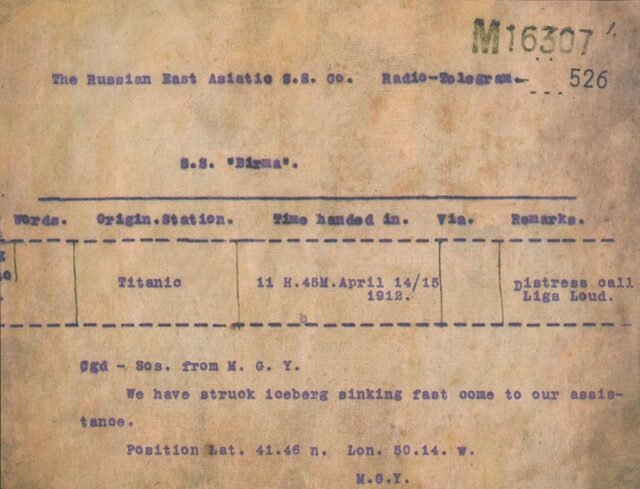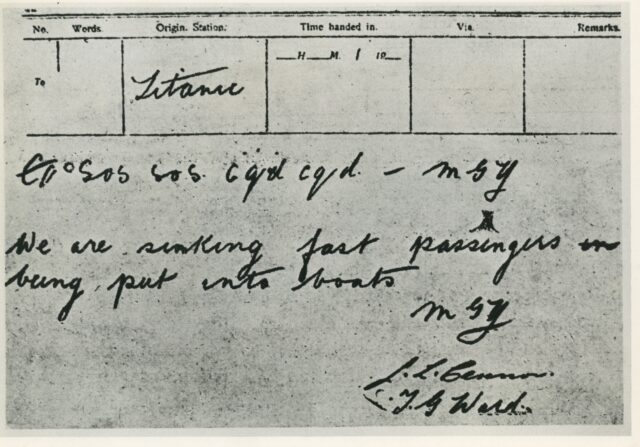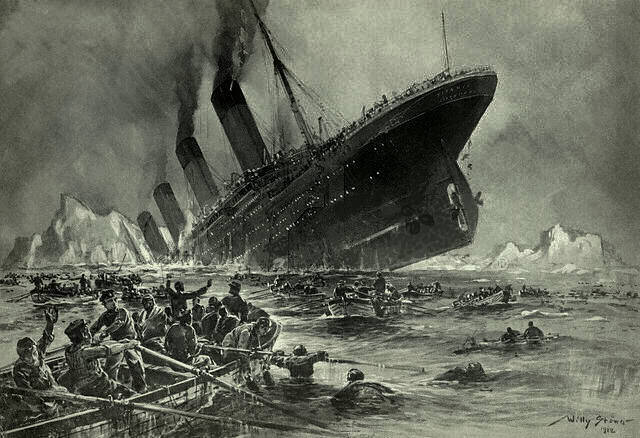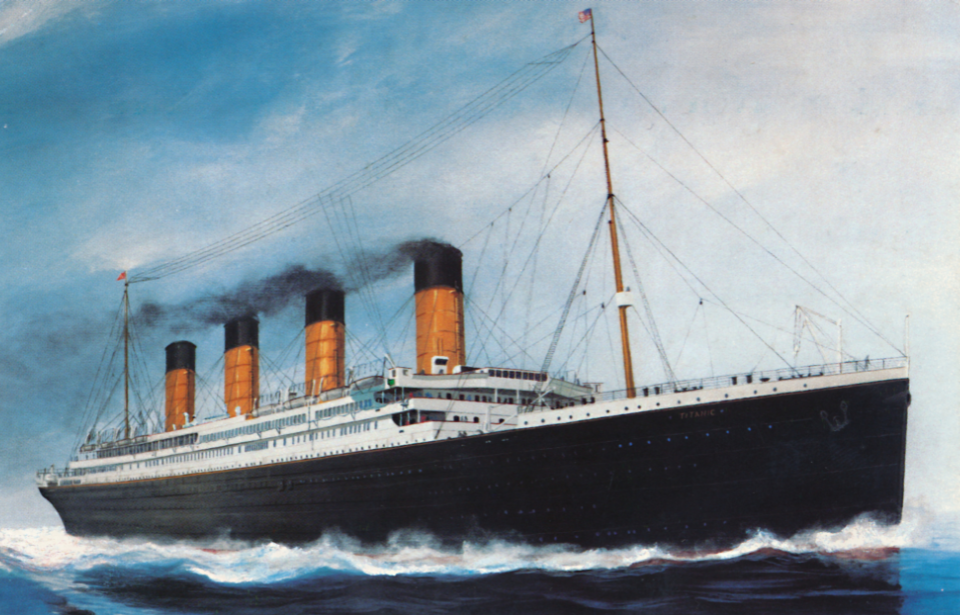The RMS Titanic is perhaps the most famous ship that ever existed. Her maiden voyage in April 1912, which ended in disaster, is a thing of legend and has held a firm grip on the minds of storytellers for generations. Much has been produced about Titanic, including books, TV shows, and most popular, the 1997 movie. But little remains from the actual sinking of the ship.
After Titanic collided with an iceberg just before midnight on April 14, 1912, she sent out distress signals to nearby ships. These messages provide an eerie minute-by-minute narrative of Titanic’s final hours.
Wireless telegraphy
In 1894-1895 Guglielmo Marconi invented the wireless telegraph, and made it commercially available in 1897. Marconi took advantage of the need for his telegraph, and by the early 1910s, most ships, including Titanic, had his telegraph on board.

Without the need for cables or any other physical infrastructure, wireless telegraphy was perfect for ships, which were constantly moving around at continuously changing distances from any one point on shore.
‘Fine voyage’
Nicknamed the “Marconi Room,” Titanic’s wireless cabin was made of three rooms: the operating room, dynamo room, and sleeping quarters. It was manned twenty-four hours a day by Jack Phillips, the chief telegraphist, and his assistant Harold Bride.

Titanic’s telegraph was used predominantly for passenger communications. One of the many luxuries passengers were offered was sending short messages via the ship’s telegraph, similar to what someone might write on a postcard.
These messages were sent to family and friends, and covered a wide range of topics. One read “dining with you tonight in spirit, heart with you always,” or another, which in hindsight is horribly ironic, “Fine voyage, fine ship.”
Weather warnings
Sending messages for passengers kept Phillips and Bride busy, and leading up to Titanic’s collision, frustrated. All telegraphs, on all ships, were all on the same frequency. That meant that Titanic could not send messages and receive them at the same time.

On April 14th, other ships sent weather warnings about ice in Titanic’s path. Mesaba warned, “heavy pack ice and [a] great number [of] large icebergs,” and Californian messaged “Say, old man, we are stopped and surrounded by ice.” Frustrated, Phillips responded, “Shut up! Shut up! I am busy. I am working Cape Race.”
Speculations have been made that while Phillips was distracted with sending passenger messages, he may have forgotten or simply did not get around to passing these warnings along to Captain Edward Smith, leading to the events of that final night.
Disaster strikes
At 11:40 pm on April 14th, Titanic collided with an iceberg. Shortly after midnight, Captain Smith told Phillips and Bride to prepare to send out distress calls. It was quickly apparent that what had seemed like nothing at all, was going to be far worse than expected. Ten minutes after being told this, Titanic sent out their first call: “CQD. CQD. Titanic to all ships.”

CQD was the distress call of the Marconi company. CQ stood for general call and D was for distress. SOS had been agreed upon in 1906 at the International Radiotelegraphic Convention and had been brought into effect in 1908. Both were still considered useful, and while Titanic sank, Phillips and Bride would use both.
Other ships inquired about what had happened. Titanic responded telling them of the collision. “Come at once. We have struck a berg. It’s a CQD man,” read one to Carpathia, and to Frankfurt, “We have struck an iceberg and sinking by the head.”
Other ships rushed to help
Ships including Carpathia, Frankfurt, and Olympic, Titanic’s sister ship, changed course to help. And by doing so, sent messages back to Titanic, and among each other. Like a rescue mission planned in the Facebook comment section, confusion and worry ensued.

As the situation aboard Titanic became worse, the anxiety within her messages became apparent. “We are putting passengers off on small boats. Women and children in boats. Cannot last much longer. Losing power,” read one message. “This is Titanic. CQD. Engine room flooded,” read another.
As others steamed towards Titanic, they sent word of their approach. “Am lighting up all boilers as fast as we can” was one example sent from Olympic. Such words of hope did little to help, and actually made things worse. Blocking the frequency, Phillips responded, “what is the matter with you?” and “You fool… keep out.”
‘We are sinking fast’
The possibility of confusion over their use of CQD instead of SOS made Bride tell Phillips to “send SOS. It’s the new call, and it may be your last chance to send it.”
Until the very end, Phillips stayed at his post informing the coming ships of the progression of the sinking. “Come quick. Engine room nearly full,” read one, “SOS. SOS. CQD. CQD. We are sinking fast. Passengers are being put into boats,” read another.”

At 2:17 am, Phillips sent the final message. Abandoning his post, both he and Bride went to the lifeboats. Phillips did not survive the sinking after entering the water. Bride, on the other hand, survived until 1956.
The messages sent by Phillips as Titanic sank are all that remain from those final hours. They show the fear and anxiety that grew while they waited for other ships to come help, and they show the determination and dedication of Phillips, sending signals as water rushed into the ship.
More from us: Haunting, Never-Before-Seen Footage of Titanic Released in New Video
Thanks to the wireless telegraph, and the work of Phillips, we have a minute-by-minute image of Titanic’s final hour before she was lost.
